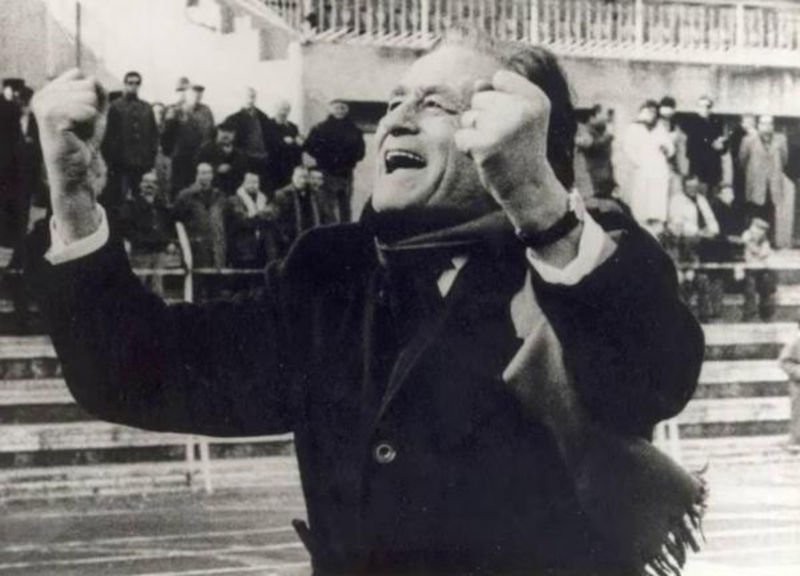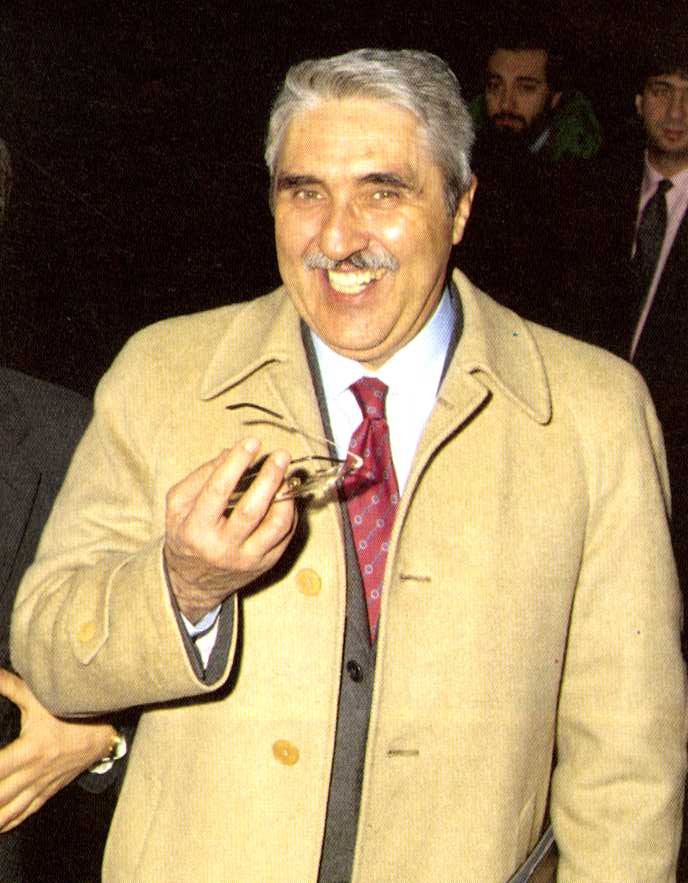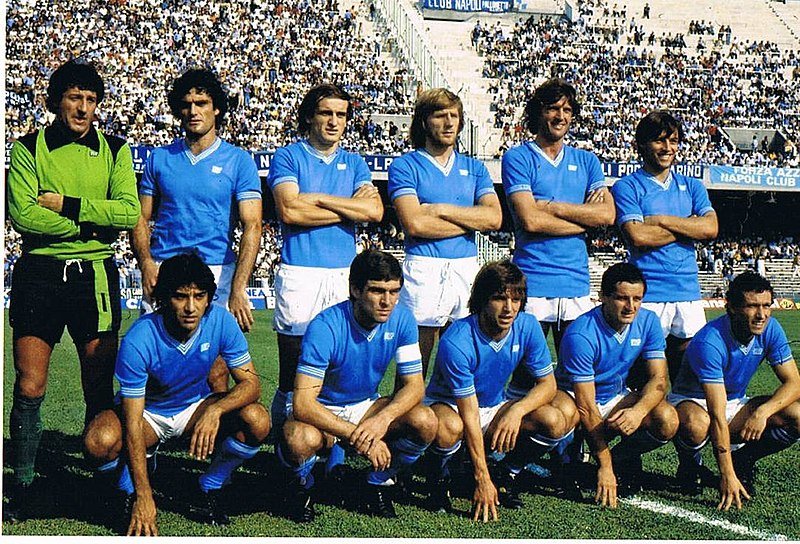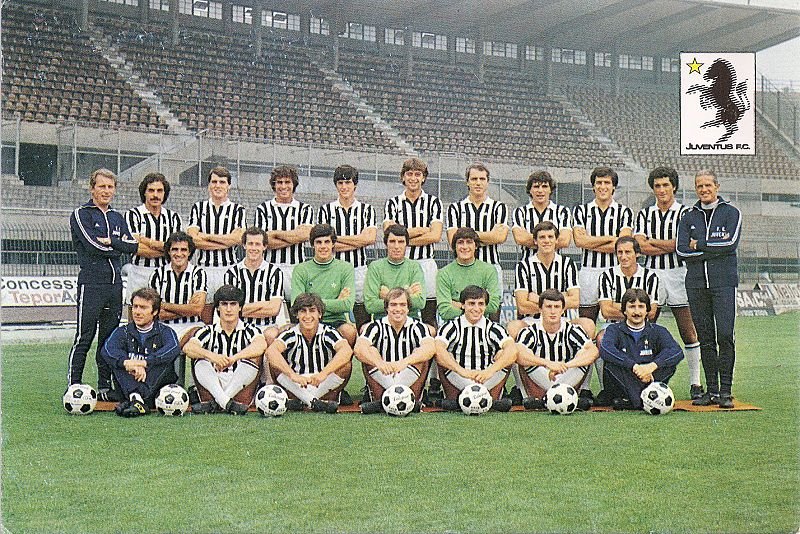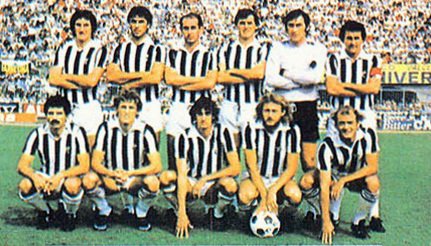English version

Dear friends, sport fans,
if you too, like me, suffer regularly in periods of abstinence from sports competitions, allow me to take advantage of these moments of pause to take you inside a small journey into the past, more exactly at the beginning of the year 1981, when the Italian Football Federatio conceived a winter tournament to cover the long void created during the winter break.
That year, in fact, the governance of Italian football had to face a new event, the Mundialito, an international tournament by invitation, organized by the Uruguay football federation to celebrate the fiftieth anniversary of the conquest of the first World Cup; all the national teams capable of winning the World Cup at least once were called to participate, and among them, of course, also Italy, which accepted the invitation.
With the best Italian players involved in South America, however, Serie A was forced to take another week off in addition to the two already planned; in order not to leave the teams inactive for too long, the then president of the Football League, Renzo Righetti, thought of creating a tournament, which would involve all sixteen participants in the championship, dividing them into four groups of four teams, who would promote the first of each group to the semifinals. Thus was born the first and only New Year's Tournament.
The novelty, which nowadays would probably be much more interesting (although impossible given the filling of the calendars), was nevertheless received coldly by the public and by most of the clubs of the Italian league, so much so that some of them, Juventus and Torino, asked to be able to play their matches exclusively away, in order to avoid the empty stadium effect (and the related costs) that the Piedmontese capital would probably have returned.
The tournament was also an opportunity to experiment with some innovations that were discussed with increasing insistence: for example, it was established that each winning team of their game with more than one goal difference would receive an extra point in the standings (thus anticipating a few years the introduction of the three points for the victory) and that the throw-ins could have been beaten even with the feet, while allowing the engagement, for the duration of the tournament, of a second foreign player, in addition to that allowed by the rules of the time.
Furthermore, given the lack of time to complete a tournament with all these matches, the unusual format was established according to which each team would face only two of the other three formations present within their group, in one-way matches, thus avoiding direct clashes between the two strongest and between the two considered weakest. The groups were formed respecting geographical criteria, in order to avoid long trips to the teams, and balancing forces.
In the Group A, in addition to Napoli, third in the league, Avellino, Ascoli and Catanzaro were also included, but despite the weakest opponents, the Neapolitans managed to scrape together only one point against Ascoli, losing the opening match at home against Avellino. The team from the Marche passed to the semifinals, capable of overcoming Catanzaro away and closing the group in the lead with three points.
The Group B, considered the one with the highest technical rate for the inclusion of AS Roma, leaders in Serie A, saw the qualification to the semifinals of Fiorentina, able to bring at home a victory in the opening home match against Perugia, and a draw on the field of Pistoiese, compared to the two draws of the Giallorossi against the same rivals. In the first match, played against Pistoiese, Roma was reached at the end thanks to a dubious penalty kick, thus failing to advance to the semifinals.
Juventus, together with Como, Cagliari and Udinese, was included in Group C and managed to advance to the semifinals only thanks to the rule of victories with more than one goal difference, which assigned an additional point in the standings. The Sardinians in fact, despite being the only team in the entire tournament capable of winning both their matches, were eliminated with the same points and goal difference with the bianconeri, who with a victory (1-3 over Como) and a draw, the rivals paired at four in the standings (at the time the victory was worth two points) but with a higher number of goals scored.
Being eliminated despite a better regular ranking was the fate reserved also for Torino, which with a draw and a victory, in Group D, was overtaken by Bologna, beaten by the Granata in the clash direct, but skilled in overcoming Inter 3-1 and in thus conquering, with the extra point, the top of the table thanks to the greater number of goals scored.
Exactly one week before the first matches, the two semifinals were played on 11 January. In Ascoli, the hosts beat Fiorentina 2-1, while in Bologna, in the match with the highest number of paying spectators of the whole tournament (about eighteen thousand), Juventus only managed to win on penalties, thanks to the last decisive shot made by Bettega.
In the meantime, Mundialito ended, with the rather obvious victory of Uruguay and with very little satisfaction for the Azzurri, eliminated from the tournament in the first round. Serie A had to restart and the time for the final, as if by magic, was never found. However, it was an official FIGC trophy, and although in all likelihood the two teams would have done without playing it, the final would have had to be played, even at the cost of moving to summer the last act of a "New Year's" tournament.
And so, on June 14, Ascoli and Juventus met at the Del Duca Stadium to complete what had started six months earlier. In front of about fifteen thousand spectators, the hosts won 2-1 thanks to a rather generous penalty awarded by the referee Tonolini of Milan, and made by Adelio Moro, already ready to move to Milan in the following season. Ascoli, under the guidance of Carletto Mazzone, thus celebrated, after the salvation, also the conquest of an official trophy, continuing the golden period started the previous year with the victory in the The Red Leaf Cup and culminated in winning the Mitropa Cup in 1987.
Thanks for reading, see you at the next article about Italian football. Ciao!
Read also:
- Serie A review, 14th round
- Juventus vs Fiorentina: best matches of the past
- Top 10 Best Selling Christmas Music Albums Ever
- Fan stories, ep. 10 (Juventus vs Fiorentina 0-3)
Versione italiana
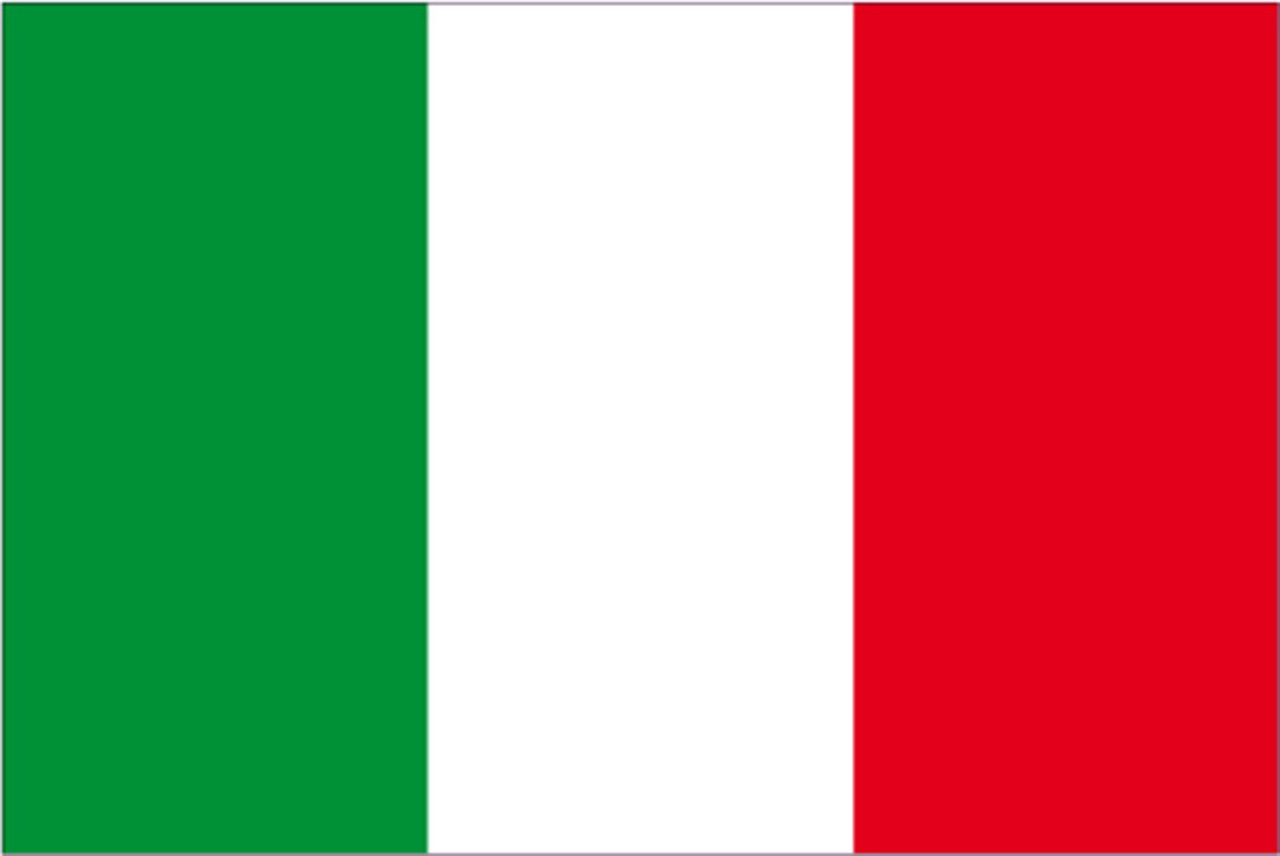
Cari amici amanti dello sport,
se anche voi, come me, soffrite regolarmente nei periodi di astinenza dalle competizioni sportive, permettetemi di sfruttare questi momenti di pausa per condurvi all'interno di un piccolo viaggio nel passato, più esattamente all'inizio dell'anno 1981, quando la Federazione Italiana Gioco Calcio ideò un torneo invernale, per coprire il lungo vuoto venutosi a creare durante la pausa invernale.
Quell'anno infatti, la governance del pallone italiano si trovò di fronte ad un evento nuovo, il Mundialito, torneo internazionale ad inviti, organizzato dalla federazione calcistica dell'Uruguay per festeggiare il cinquantenario dalla conquista della prima coppa del mondo; furono chiamate a partecipare tutte le nazionali capaci di conquistare almeno una volta la Coppa del Mondo, e tra esse, ovviamente, anche l'Italia, che accettò l'invito.
Con i migliori giocatori azzurri impegnati in Sudamerica però, la Serie A si vide costretta ad un'ulteriore settimana di pausa oltre alle due già previste; per non lasciare le squadre troppo a lungo inattive, l'allora presidente della Lega Calcio, Renzo Righetti, pensò alla creazione di un torneo, che impegnasse tutte e sedici le partecipanti al campionato, dividendole in quattro gironi da quattro squadre, che avrebbero promosso le prime classificate di ogni gruppo alle semifinali. Nacque così il primo e unico Torneo di Capodanno.
La novità, che al giorno d'oggi risulterebbe con buona probabilità molto più interessante (benché irrealizzabile visto il riempimento dei calendari), venne tuttavia accolta con freddezza dal pubblico e da buona parte dei club del massimo campionato italiano, tanto che alcuni di essi, come Juventus e Torino, chiesero di poter giocare le loro gare esclusivamente in trasferta, in modo da evitare l'effetto stadio vuoto (e i relativi costi) che il capoluogo piemontese avrebbe verosimilmente restituito.
Il torneo fu anche un'occasione per sperimentare alcune novità delle quali si discuteva con sempre più insistenza: venne ad esempio stabilito che ogni squadra vincitrice della propria partita con più di una rete di scarto, avrebbe ricevuto un punto extra in classifica (anticipando così di qualche anno l'introduzione dei tre punti per la vittoria) e che le rimesse laterali si sarebbero potute battere anche con i piedi, mentre si permetteva l'ingaggio, per la durata del torneo, di un secondo calciatore straniero, oltre a quello consentito dalle norme dell'epoca.
Inoltre, vista la mancanza di tempo utile per completare un torneo con tutte queste partite, si stabilì l'insolito format secondo il quale ogni squadra avrebbe affrontato solo due delle altre tre formazioni presenti all'interno del proprio girone, in gare di sola andata, evitando così gli scontri diretti tra le due più forti e tra le due ritenute più deboli. I gironi vennero formati rispettando criteri geografici, in modo da evitare alle squadre lunghe trasferte, e di bilanciamento delle forze.
Nel Girone A, oltre al Napoli terzo in campionato, vennero inserite anche l'Avellino, l'Ascoli e il Catanzaro, ma nonostante le avversarie non irresistibili, i partenopei riuscirono a racimolare solo un punto nella sfida con l'Ascoli, perdendo la partita inaugurale in casa contro l'Avellino. A passare alle semifinali furono i marchigiani, capaci di superare il Catanzaro in trasferta e di chiudere il girone in testa con tre punti.
Il Girone B, ritenuto quello con il maggior tasso tecnico per l'inserimento della Roma, capolista in Serie A, vide la qualificazione alle semifinali della Fiorentina, abile a portare a casa una vittoria nella gara inaugurale casalinga contro il Perugia, ed un pareggio sul campo della Pistoiese, contro i due pareggi dei giallorossi contro le stesse rivali. Nella prima partita, disputata contro la Pistoiese, la Roma venne raggiunta allo scadere da un calcio di rigore dubbio, pregiudicando così l'avanzamento alle semifinali.
La Juventus, insieme al Como, al Cagliari e all'Udinese, venne inserita nel Girone C e riuscì ad avanzare alle semifinali solo grazie alla regola delle vittorie con più di un goal di scarto, che assegnavano un punto supplementare in classifica. I sardi infatti, nonostante fossero l'unica squadra dell'intero torneo capace di vincere entrambe le proprie partite, vennero eliminati a parità di punti e differenza reti con i bianconeri, che con una vittoria (1-3 sul Como) e un pareggio, appaiarono i rivali a quota quattro in classifica (all'epoca la vittoria valeva due punti) ma con un maggior numero di goal segnati.
Essere eliminati nonostante una classifica regolare migliore fu la sorte riservata anche al Torino, che con un pareggio e una vittoria, nel Girone D, si vide scavalcare dal Bologna, battuto dai granata nello scontro diretto, ma abile nel superare l'Inter 3-1 e nel conquistare così, con il punto supplementare, la testa della classifica in base al maggior numero di reti segnate.
Ad una settimana esatta dalle prime partite, l'11 Gennaio si disputarono le due semifinali. Ad Ascoli, i padroni di casa superarono 2-1 la Fiorentina, mentre a Bologna, nella partita con il maggior numero di spettatori paganti di tutto il torneo (circa diciottomila), la Juventus riuscì ad avere la meglio soltanto ai calci di rigore, grazie all'ultimo decisivo tiro realizzato da Bettega.
Nel frattempo il Mundialito terminò, con la vittoria piuttosto scontata dell'Uruguay e con ben poche soddisfazioni per gli azzurri, eliminati dal torneo al primo turno. La Serie A doveva ripartire e il tempo per la finale, come per incanto, non venne più trovato. Tuttavia, si trattava di un trofeo ufficiale FIGC, e sebbene con ogni probabilità le due squadre avrebbero anche fatto a meno di disputarla, la finale si sarebbe dovuta giocare per forza, anche a costo di spostare in estate l'ultimo atto di un torneo di "Capodanno".
E così, il 14 Giugno, Ascoli e Juventus si ritrovarono allo Stadio Del Duca per completare quanto iniziato sei mesi prima. Davanti a circa quindicimila spettatori, i padroni di casa si imposero 2-1 grazie ad un rigore piuttosto generoso assegnato dall'arbitro Tonolini di Milano, e realizzato da Adelio Moro, già promesso sposo del Milan per la stagione successiva. L'Ascoli, sotto la guida di Carletto Mazzone, festeggiò così, dopo la salvezza, anche la conquista di un trofeo ufficiale, continuando il periodo d'oro iniziato l'anno precedente con la vittoria nella The Red Leaf Cup e culminato con la conquista della Coppa Mitropa nel 1987.

